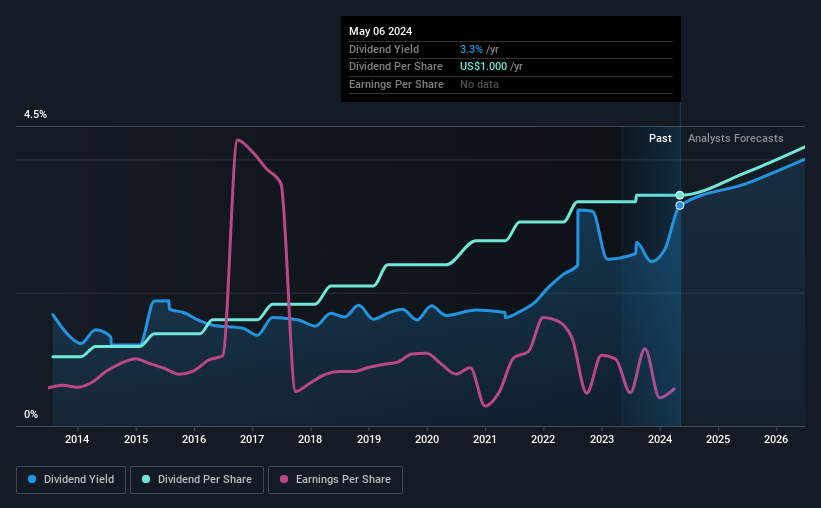Open Text (NASDAQ:OTEX) Is Paying Out A Dividend Of $0.25
The board of Open Text Corporation (NASDAQ:OTEX) has announced that it will pay a dividend on the 18th of June, with investors receiving $0.25 per share. The dividend yield will be 3.3% based on this payment which is still above the industry average.
Check out our latest analysis for Open Text
Open Text's Dividend Is Well Covered By Earnings
Impressive dividend yields are good, but this doesn't matter much if the payments can't be sustained. Prior to this announcement, the company was paying out 160% of what it was earning, however the dividend was quite comfortably covered by free cash flows at a cash payout ratio of only 36%. Healthy cash flows are always a positive sign, especially when they quite easily cover the dividend.
Over the next year, EPS is forecast to expand by 191.8%. Assuming the dividend continues along the course it has been charting recently, our estimates show the payout ratio being 62% which brings it into quite a comfortable range.
Open Text Has A Solid Track Record
Even over a long history of paying dividends, the company's distributions have been remarkably stable. Since 2014, the dividend has gone from $0.30 total annually to $1.00. This works out to be a compound annual growth rate (CAGR) of approximately 13% a year over that time. Rapidly growing dividends for a long time is a very valuable feature for an income stock.
Dividend Growth Is Doubtful
The company's investors will be pleased to have been receiving dividend income for some time. However, things aren't all that rosy. In the last five years, Open Text's earnings per share has shrunk at approximately 9.5% per annum. A modest decline in earnings isn't great, and it makes it quite unlikely that the dividend will grow in the future unless that trend can be reversed. Earnings are forecast to grow over the next 12 months and if that happens we could still be a little bit cautious until it becomes a pattern.
In Summary
Overall, it's nice to see a consistent dividend payment, but we think that longer term, the current level of payment might be unsustainable. The company is generating plenty of cash, but we still think the dividend is a bit high for comfort. We would probably look elsewhere for an income investment.
It's important to note that companies having a consistent dividend policy will generate greater investor confidence than those having an erratic one. Meanwhile, despite the importance of dividend payments, they are not the only factors our readers should know when assessing a company. Case in point: We've spotted 5 warning signs for Open Text (of which 1 is significant!) you should know about. If you are a dividend investor, you might also want to look at our curated list of high yield dividend stocks.
Have feedback on this article? Concerned about the content? Get in touch with us directly. Alternatively, email editorial-team (at) simplywallst.com.
This article by Simply Wall St is general in nature. We provide commentary based on historical data and analyst forecasts only using an unbiased methodology and our articles are not intended to be financial advice. It does not constitute a recommendation to buy or sell any stock, and does not take account of your objectives, or your financial situation. We aim to bring you long-term focused analysis driven by fundamental data. Note that our analysis may not factor in the latest price-sensitive company announcements or qualitative material. Simply Wall St has no position in any stocks mentioned.

 Yahoo Finance
Yahoo Finance 
